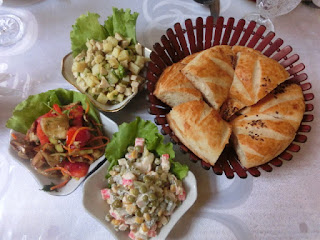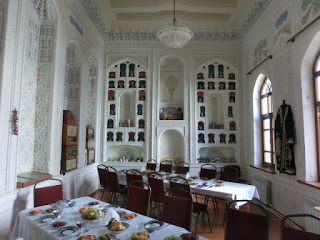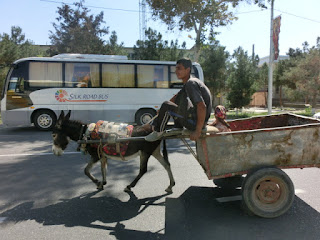Historic Town of Monuments
To get a taste of the historic monuments in Uzbekistan, Bukhara is the place to visit. Compared to Tashkent, it has much more of the mysterious veil of a medieval city that was the centre of the Silk Road and has been kept much more intact.
One of the key highlights when viewing Bukhara from a rooftop is the Kalyan Minaret. Standing at 47 metres tall, this minaret has been standing for nine centuries. This was actually a tower of death at one point and only was closed to the public after a tourist fell off by accident. With strong foundations for earthquake proofing, it’s only one of very few structures that have been left intact. Built by Karakhanid ruler Arslan Khan, it was mainly used to summon Muslims to prayer five times a day.
Chashma-Ayub means Job’s Spring in Persian. There is currently a museum that contains a wealth of information about water sources in Uzbekistan in addition to the well that was found by Job. I didn’t realize the dramatic impact cotton farming has had on Uzbekistan until I saw the map of the shrinking Aral Sea. With the pesticides being used in cotton carried by the wind, the land and water near the Aral Sea are heavily contaminated. The other highlight is Job’s well. According to legend, Job visited this place and found a spring of water by hitting his staff on the ground. Before the days of the Soviet Rule, the main sources of drinking water came from the numerous ponds in Bukhara. The profession of water carriers was even organically created to transport water from the ponds to people’s homes. But these were also the ponds that carried around diseases. One of the remaining ponds is in the area of the Lab-i-Hauz complex. Locals hang out under the mulberry trees playing chess, smoking from water pipes and enjoying themselves in the company of friends and drinks. The complex also includes the largest madrasah in the city-the Kukeidash Madrasah. The numerous madrasahs in Bukhara help to nurture the imams that become religious leaders in mosques. Most live and go to school at madrasahs and tuition is quite affordable at US$500 per year with accommodation and two meals provided each day.
There are plenty of bazaars selling an assortment of handicrafts ranging from carpets and embroidery to knives and scissors. I could easily spend hours going through the shops! After a shopping spree, I was in much need of some great food. I highly recommend Doston House-a hidden gem serving excellent homecooked meals, especially the dulma, which are rolls of cabbage, bell peppers and vine leaves stuffed with meat and well cooked rice. There are no signs, so only those who know the restaurant would know how to locate it! Originally built by a Jewish and passed down to his son, the house was bought by a Muslim. Today, there is a small population of Jews with only a couple thousand remaining as most have left during World War II. The niches in the walls are packed with trinkets, painted mosaics and beautiful traditional ornaments.


















































